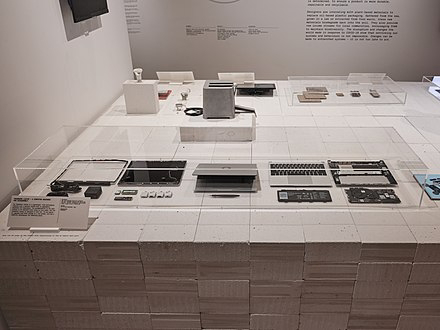Computer keyboardA PC console is a fringe input gadget displayed after the typewriter keyboard[1] which utilizes a game plan of buttons or keys to go about as mechanical switches or electronic switches. Supplanting early punched cards and paper tape innovation, connection through teleprinter-style consoles have been the fundamental information technique for PCs since the 1970s, enhanced by the PC mouse since the 1980s.

Play media
Composing on a PC console
Console keys (buttons) ordinarily have a bunch of characters engraved or imprinted on them, and each press of a key regularly compares to a solitary composed image. Be that as it may, creating a few images might require squeezing and holding a few keys at the same time or in sequence.[2] While most console keys produce letters, numbers or images (characters), other keys or concurrent key presses can provoke the PC to execute framework orders, for example, for example, the Control-Alt-Delete mix utilized with Microsoft Windows.[3][4] In a cutting edge PC, the translation of key presses is by and large passed on to the product: the data shipped off the PC, the output code, tells it just which key (or keys) on which line and section, was squeezed or released.[5]
In ordinary utilization, the console is utilized as a text section interface for composing text, numbers, and images into application programming like a word processor, internet browser or online media application.
History
While typewriters are the authoritative precursor of all key-based text section gadgets, the PC console as a gadget for electromechanical information passage and correspondence gets to a great extent from the utility of two gadgets: teleprinters (or prints) and keypunches. It was through such gadgets that advanced PC consoles acquired their formats.
As ahead of schedule as the 1870s, teleprinter-like gadgets were utilized to all the while type and send financial exchange message information from the console across broadcast lines to stock ticker machines to be promptly duplicated and shown onto ticker tape.[6] The teleprinter, in its more contemporary structure, was created from 1907 to 1910 by American mechanical architect Charles Krum and his child Howard, with early commitments by electrical designer Frank Pearne. Prior models were grown independently by people like Royal Earl House and Frederick G. Ideology.
Prior, Herman Hollerith fostered the first keypunch gadgets, which before long advanced to incorporate keys for text and number section much the same as should be expected typewriters by the 1930s.[7]
The console on the teleprinter assumed a solid part in highlight point and highlight multipoint correspondence for the vast majority of the twentieth century, while the console on the keypunch gadget assumed a solid part in information section and capacity for similarly as long. The improvement of the most punctual PCs fused electric typewriter consoles: the advancement of the ENIAC PC joined a keypunch gadget as both the info and paper-based yield gadget, while the BINAC PC likewise utilized an electromechanically controlled typewriter for the two information passage onto attractive tape (rather than paper) and information output.[8]
The console stayed the essential, most coordinated PC fringe into the period of individualized computing until the presentation of the mouse as a purchaser gadget in 1984. At this point, message just UIs with inadequate designs offered approach to nearly illustrations rich symbols on screen.[9] However, consoles stay vital to human-PC collaboration to the present, even as versatile individualized computing gadgets, for example, cell phones and tablets adjust the console as a discretionary virtual, touchscreen-based method for information section.
A wired PC console for work area utilize fabricated by Lenovo
Various kinds of consoles are accessible and each is planned with an emphasis on explicit elements that suit specific needs.[10] Today, most regular consoles utilize one of three distinct mechanical formats, ordinarily alluded to as essentially (ISO/IEC 9995-2), (ANSI-INCITS 154-1988), and (JIS X 6002-1980), alluding generally to the associations giving the applicable around the world, United States, and Japanese principles, separately. (Truth be told, the mechanical formats alluded, for example, "ISO" and "ANSI" go along to the essential suggestions in the named norms, while every one of these guidelines indeed likewise permits the alternate way.) ANSI standard alphanumeric consoles have keys that are on three-quarter inch focuses (0.75 inches (19 mm)), and have a critical travel of basically 0.15 inches (3.8 mm).[citation needed]
Present day console models contain a set number of absolute keys as per their given norm, portrayed as 101, 104, 105, and so on and sold as "Standard size" keyboards.[11] Modern consoles coordinating with US shows ordinarily have 104 keys while the 105 key design is the standard in the remainder of the world. This number isn't constantly followed, and individual keys or entire areas are generally skipped for conservativeness or client inclination. The most widely recognized decision is to exclude the numpad, which can typically be completely supplanted by the alphanumeric segment. Workstations and remote peripherals regularly need copy keys and ones only occasionally utilized. Capacity and bolt keys are almost consistently present.
Another factor deciding the size of a console is the size and dispersing of the keys. The decrease is restricted by the down to earth thought that the keys should be sufficiently huge to be effectively squeezed by fingers. On the other hand, a device is utilized for squeezing little keys.






nice
ReplyDelete